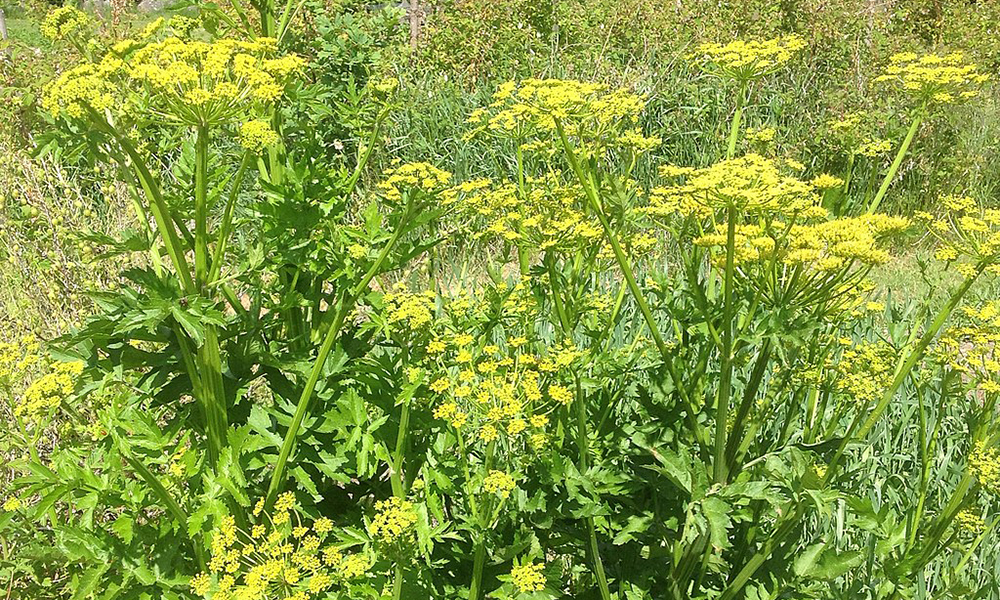As I drive to and from work these past few weeks, I have noticed the growth of Wild Parsnip (Pastinaca sativa) along the roadside area, especially along the secondary roads in Albany County such as Krumkill Road from Schoolhouse Road to Voorheesville. This weed looks like Queen Anne’s Lace or Wild Carrot on steroids, but the flower is yellow not white.
It’s called Wild Parsnip, and it’s a biennial, meaning it takes two years to complete its life cycle. The first year the main growth is a rosette and the second year the plant grows 2-5 feet and flowers, completing the life cycle. Wild Parsnip produces large amounts of seed so it is spreading rapidly. The main concern, however, is that the plant sap contains chemicals that when introduced to skin react with sunlight to cause a burn. These chemicals are called furocoumarins and they cause what dermatologists refer to as phytophotodermatitis – an inflammation of the skin brought on by a specific plant and sunlight.
In mild cases, the skin appears red and will feel sunburned. In severe cases, skin will redden and then blister and feel scalded. Skin affected by Wild Parsnip will often have a dark red or brownish tinge after it has healed, which can persist for up to two years. This is nothing to fool around with as people have been hospitalized after contact. Avoid exposure if possible, but if you suspect a brush with this weed, wash thoroughly as soon as possible. Since the look of the skin after exposure resembles the poison ivy rash, the patient who can recognize the plant demon may be the best aid in his own cure. This is a relatively new plant to our area and many doctors may not know of it or its effects. Remember, it is exposure to the juice of the plant and sunlight that becomes the deadly combination and skin sensitivity is greatest at flowering time.
This is a non-native plant that appears to have been introduced to the mid-west from Europe and Asia; dried plants from the University of Wisconsin date back to 1894. Wild Parsnip grows along roadsides in undisturbed open areas, and abandoned fields out-competing native plants. This is not a plant that one would normally find in mowed areas so homeowners need not worry. But, be careful if you are out gathering wildflowers as this weed would find that environment quite suitable. Wild Parsnip is the devil along the roadside and it has migrated east – so beware!





